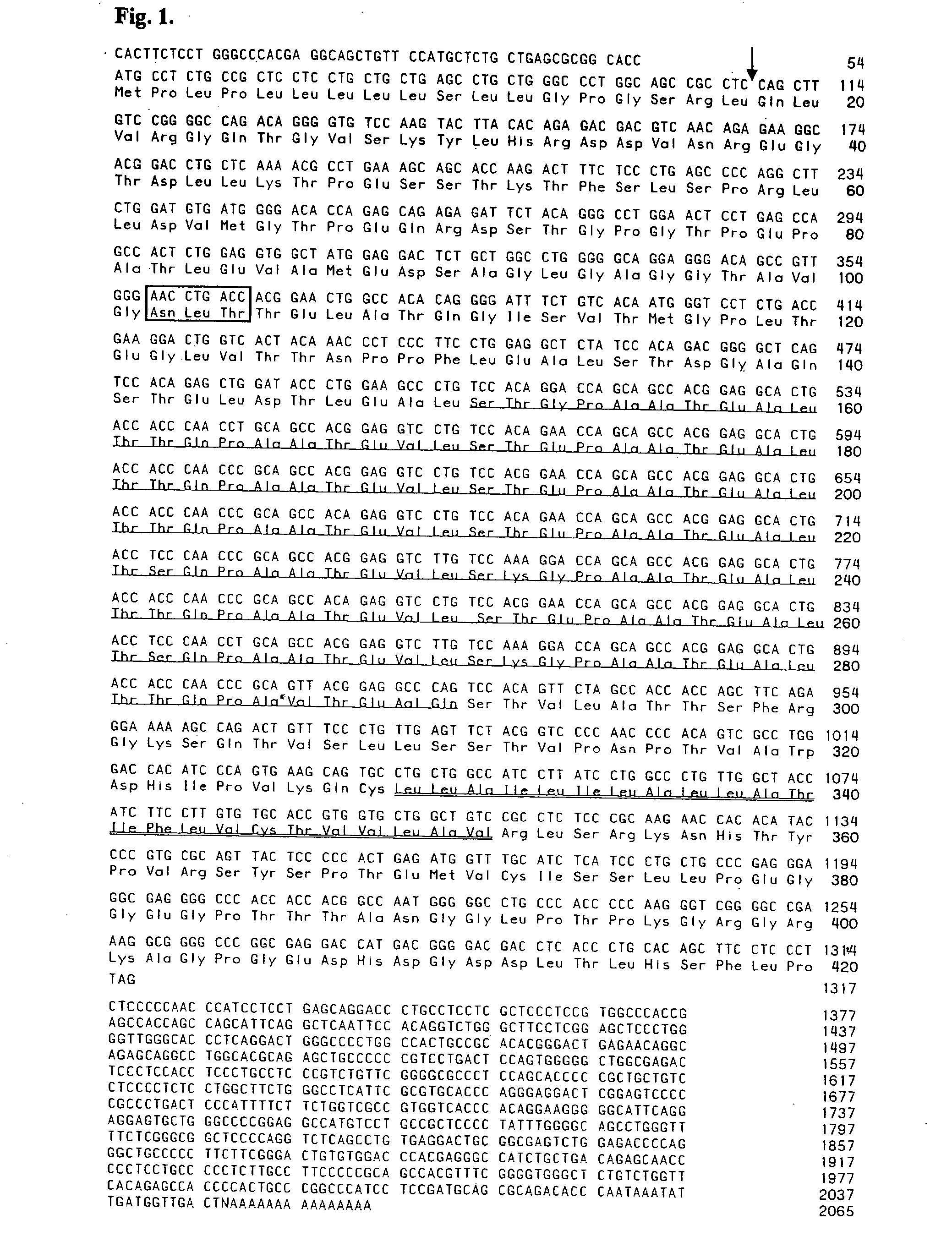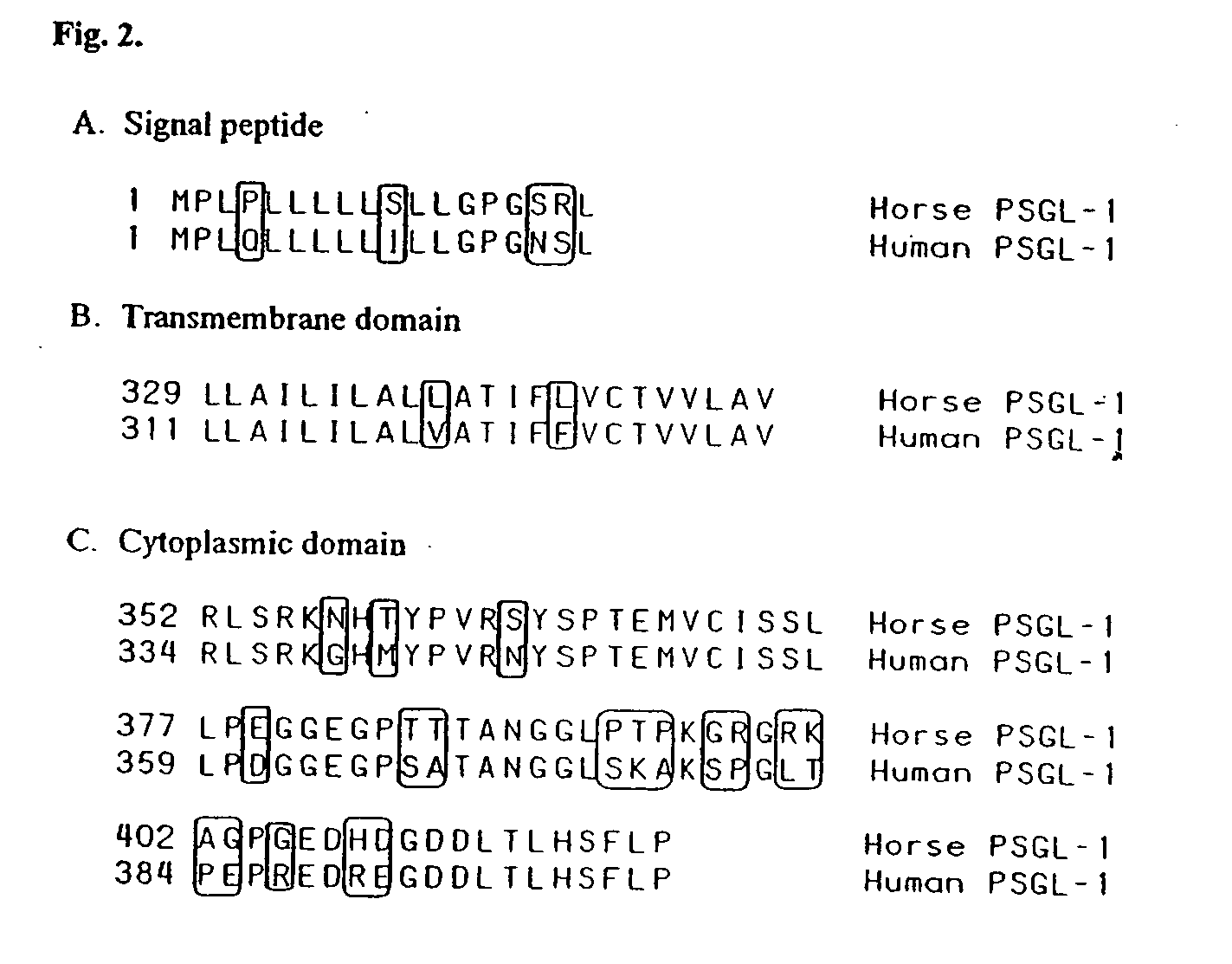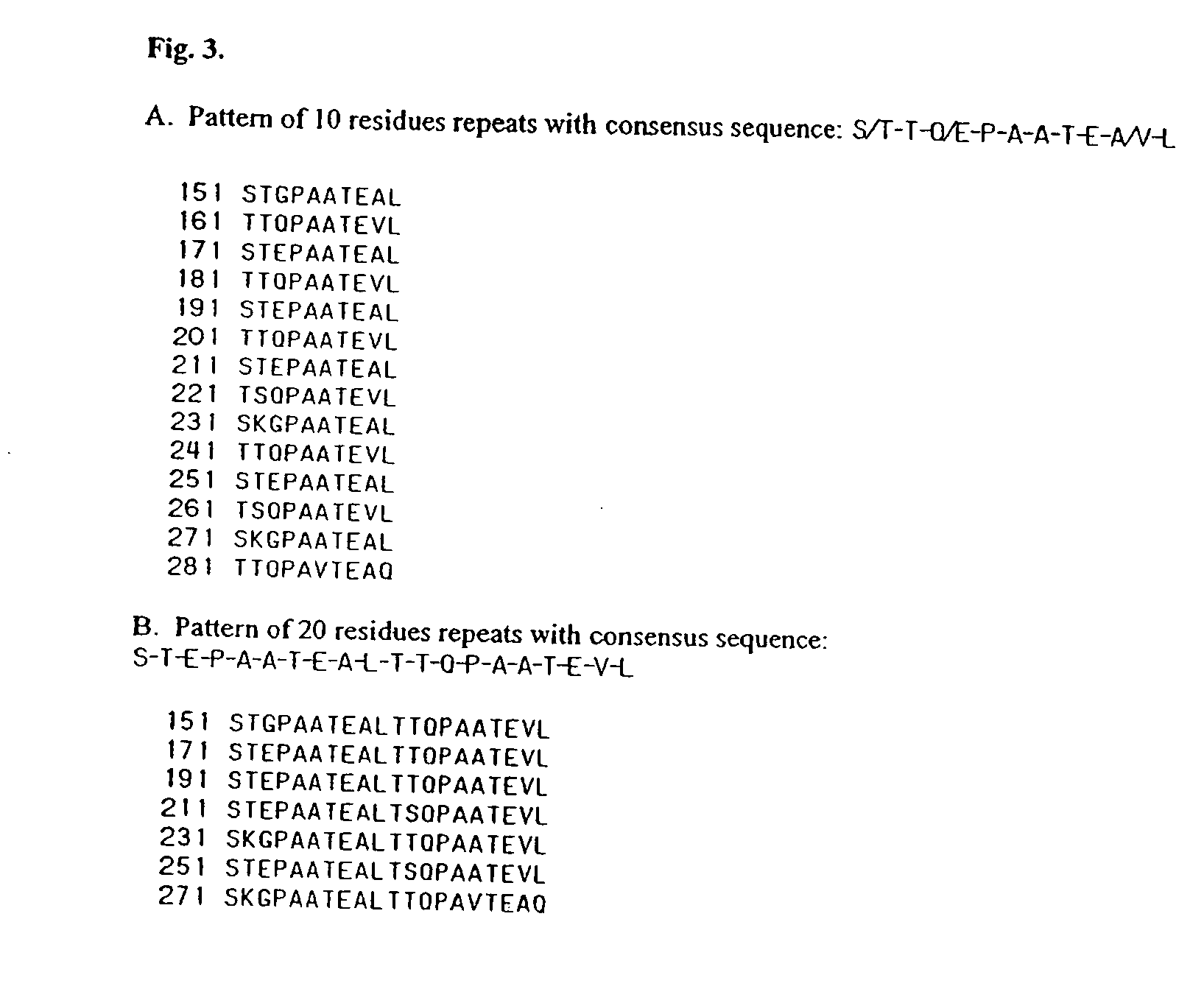Equine P-selectin glycoprotein ligand-1 and uses thereof
- Summary
- Abstract
- Description
- Claims
- Application Information
AI Technical Summary
Benefits of technology
Problems solved by technology
Method used
Image
Examples
example 1
Characterization of ePSGL-1 cDNA and Polypeptide
[0150] Peripheral Blood Mononuclear Cell (PBMC) collection. Blood from a normal healthy horse was collected into 3.8% sodium citrate. Gravity separation by rouleaux formation of the Red Blood Cells from the White Blood Cells was accomplished by allowing the equine whole blood to settle undisturbed at 20° C. temperature for 45 minutes. The Platelet Leukocyte Rich Plasma (PLRP) was collected in a sterile tube, which was then filled with Phosphate Buffered Saline (PBS) and spun at 300×g for 10 min. The supernatant was discarded and the pellet resuspended with 15 mL of PBS. In order for the cells to segregate into three layers, 10 mL of Histopaque-1077 (Sigma®) was added and centrifuged at 600×g for 20 min. The PBMC rich interphase was collected and washed twice with PBS. Cells were then cultured overnight in medium (RPMI-1640 supplemented with 10% Newborn Calf Serum and 1% Penicillin / Streptomycin), at 37° C. All experiments conformed to ...
example 2
Construction of an Equine PSGL-1 Plasmid: pPSGL1-Myc / His
[0162] In this example, cDNA coding the equine PSGL-1 (ePSGL-1) Open Reading Frame (ORF) was amplified by polymerase chain reaction (PCR) using primers that add the unique restriction sites Xho I and BamH I on the 5′ and 3′ ends, respectively. FIG. 4 illustrates the appropriate step-by-step methodology. The ePSGL-1 fragment was purified by agarose electrophroresis and subsequently cloned into a TOPO vector for sequencing. After confirmation of the nucleotide sequence, the ePSGL-1 fragment was excised with XhoI and BamHI and subcloned into the pcDNA3.1 / Myc-His(−) expression vector to obtain a construct according to the invention.
example 3
Establishment of Cell Lines Expressing Functional ePSGL-1 on their Cell Surface
[0163] A functional ePSGL-1 protein is expected to specifically-bind equine P-selectin and efficiently mediate cell signaling after its binding. It is recognized that post-translation modifications of human PSGL-1 is required for efficient binding to P-selectin. Accordingly, as shown schematically in FIG. 5, three types of CHO cells: Core2 (C2GnT=core 2 beta-1,6-N-acetylglucosaminyl transferase) expessing only; Fucosyltransferase VII (Fuc-TVII) expressing only; and C2GnT +Fuc-TVII expressing are co-transfected with the plasmid pePSGL-1-Myc / His to express post-translational modified ePSGL-1 proteins on the cell surface. ePSGL-1 CHO cell binding to P-selectin platelets may then be assessed by flow cytometry to determine relative levels of PSGL-1 / P-selectin binding.
[0164] Furthermore, if the recombinant ePSGL-1 expressed on CHO cells is functional, the binding with P-selectin peptide will mediate cell sign...
PUM
 Login to View More
Login to View More Abstract
Description
Claims
Application Information
 Login to View More
Login to View More - R&D
- Intellectual Property
- Life Sciences
- Materials
- Tech Scout
- Unparalleled Data Quality
- Higher Quality Content
- 60% Fewer Hallucinations
Browse by: Latest US Patents, China's latest patents, Technical Efficacy Thesaurus, Application Domain, Technology Topic, Popular Technical Reports.
© 2025 PatSnap. All rights reserved.Legal|Privacy policy|Modern Slavery Act Transparency Statement|Sitemap|About US| Contact US: help@patsnap.com



